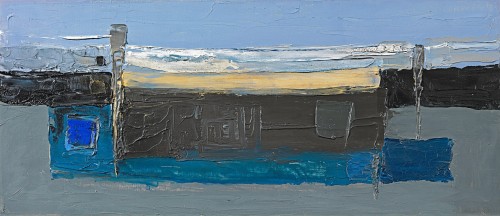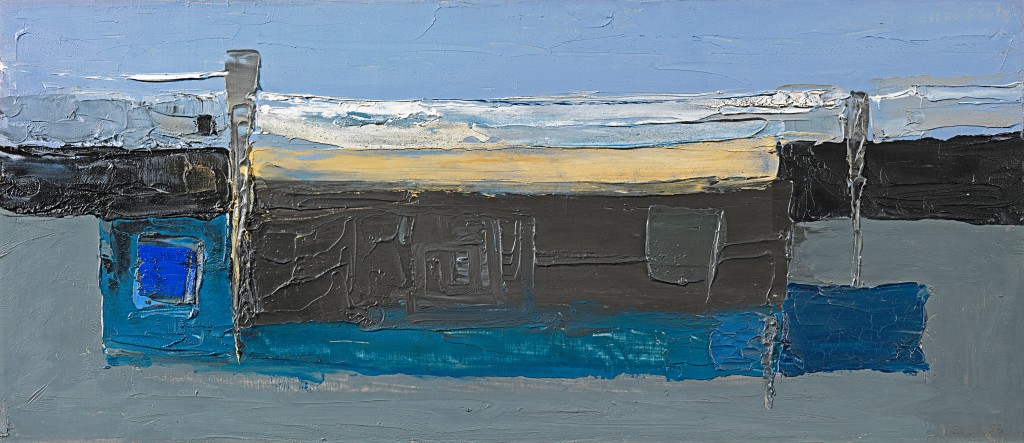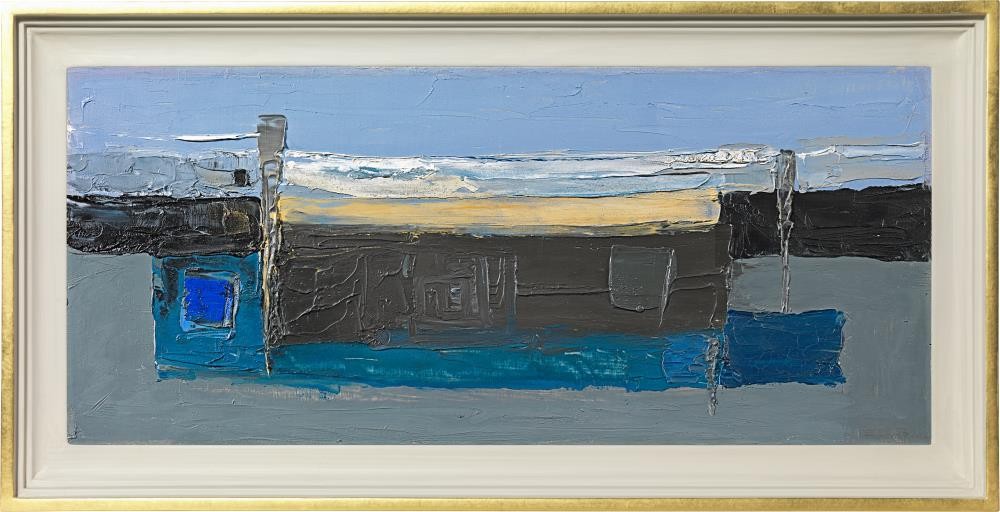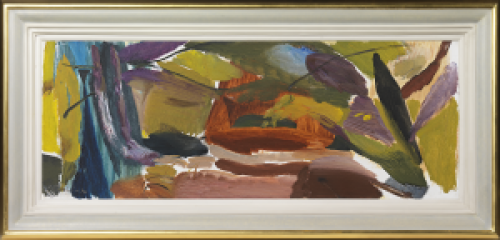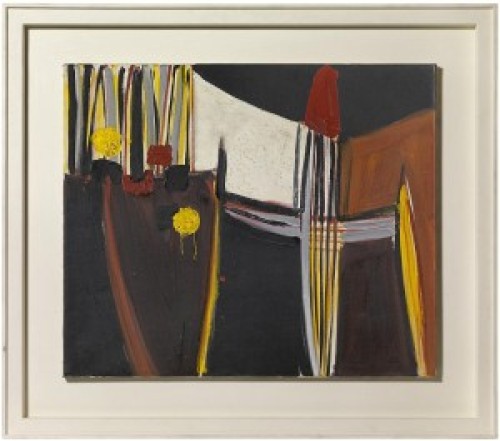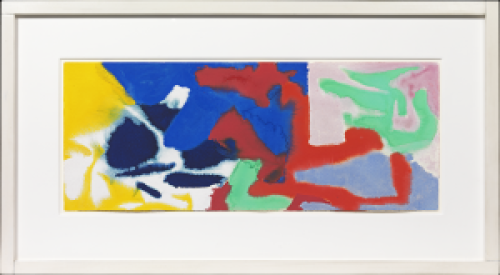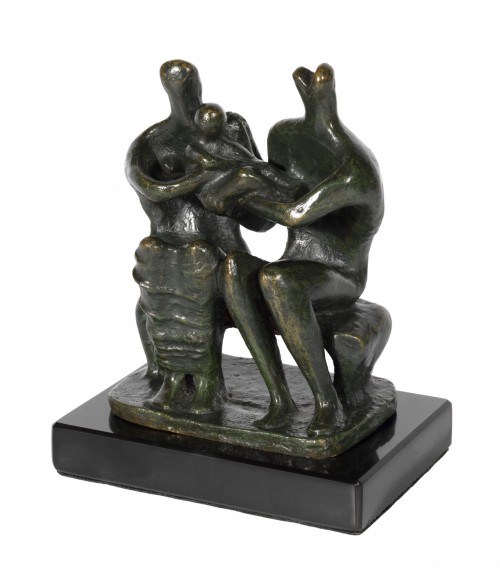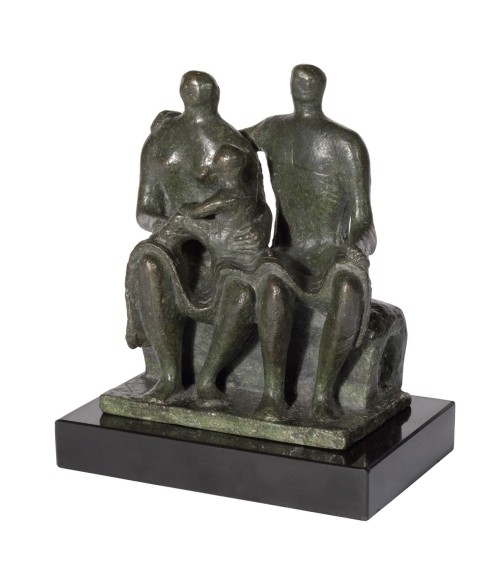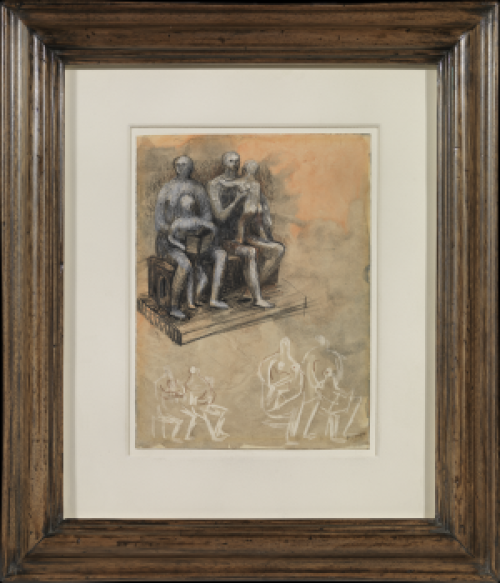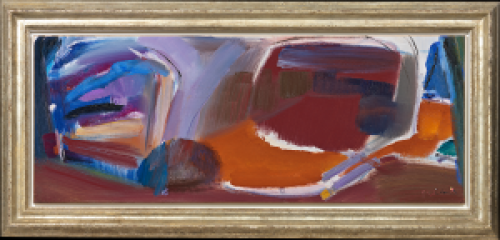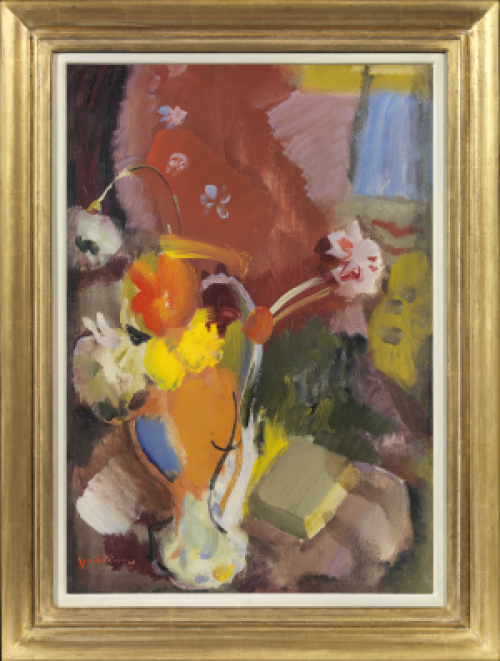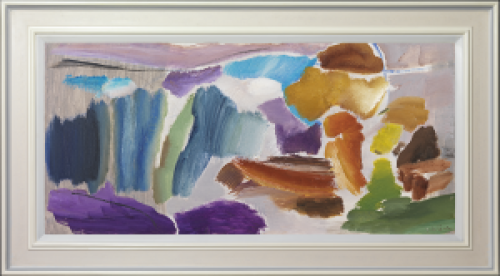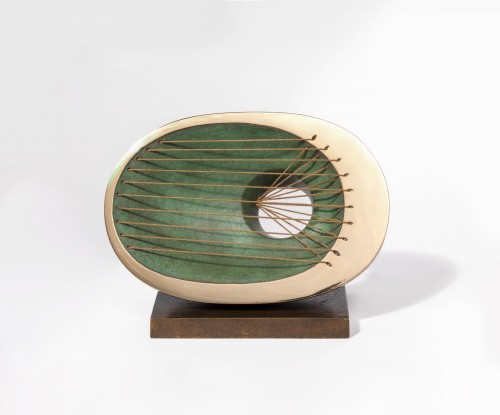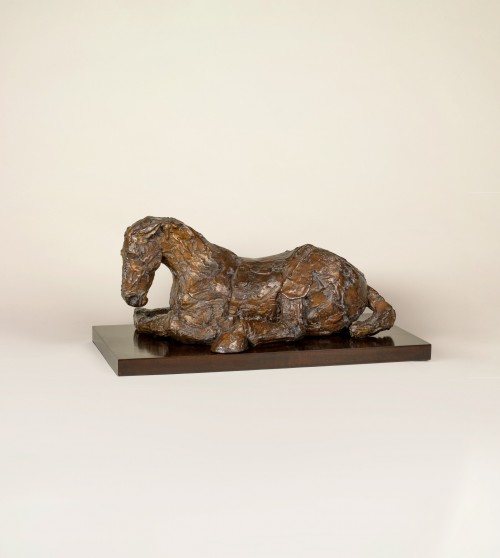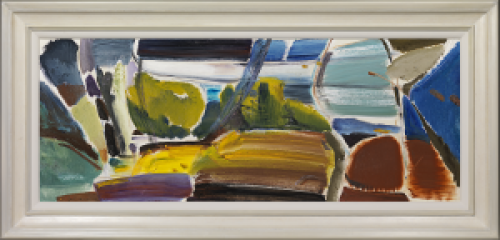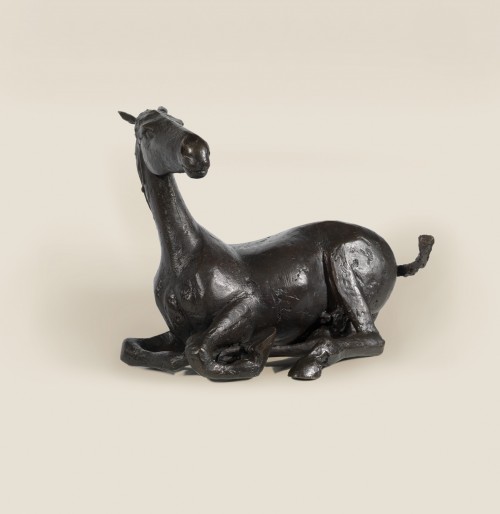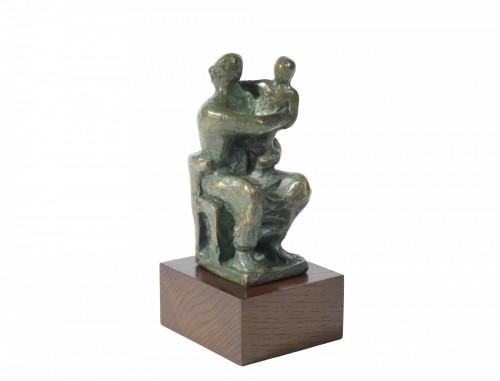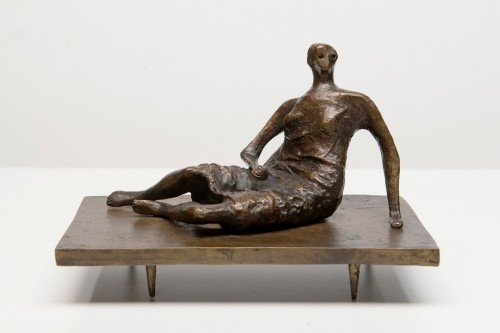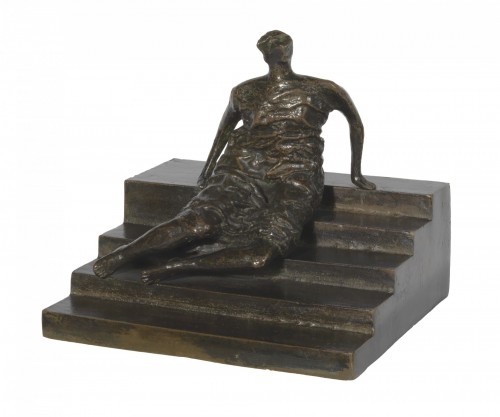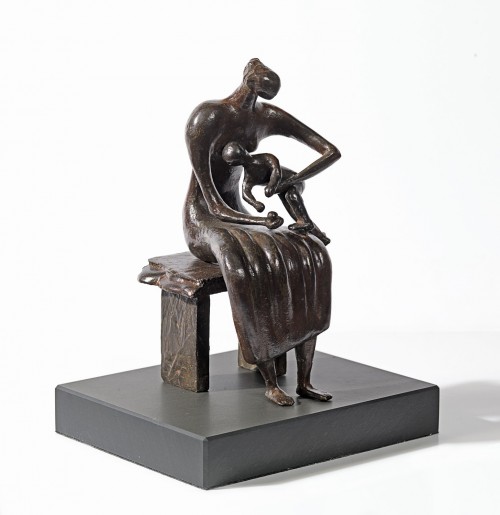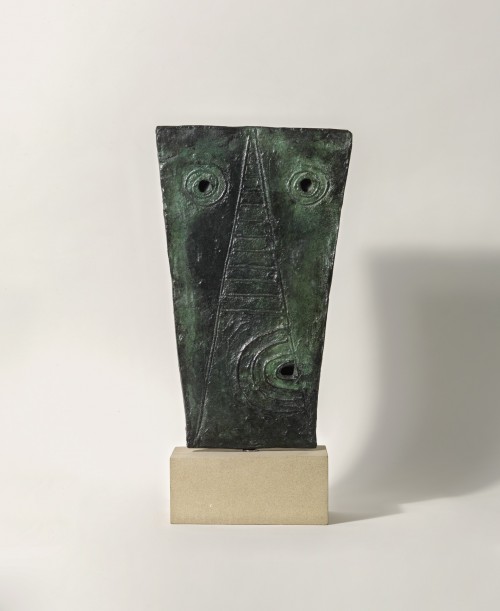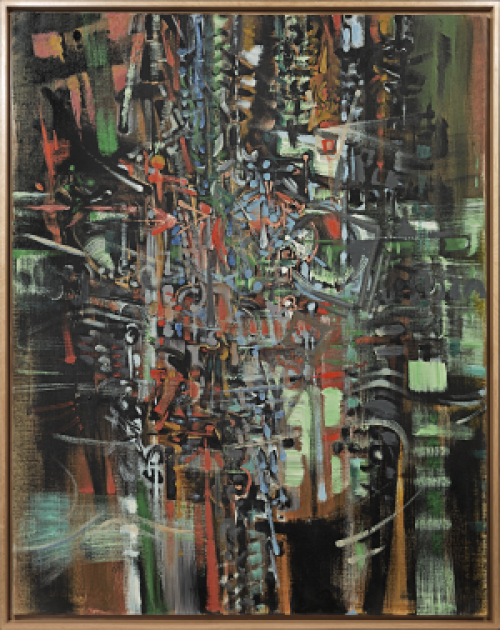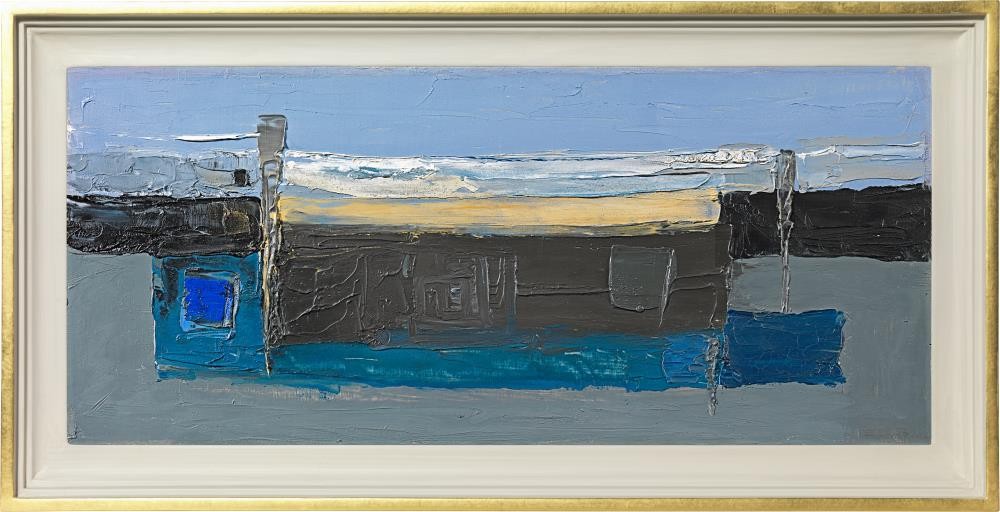PAUL FEILER
Frankfurt 1918 - 2013 Cornwall
Ref: CA 184
Cornish beach
Signed and dated lower right: Feiler 53; signed, dated and inscribed on the reverse: PAUL FEILER / CORNISH BEACH 1953
Oil on board: 11 ⅜ x 25 ⅞ in / 28.9 x 65.7 cm
Frame size: 14 ¼ x 29 in / 36.2 x 73.7 cm
Provenance:
Professor Lawrence Ogilvie, acquired directly from the artist, then by descent;
private collection, UK
With the proceeds of the critical and commercial success of his first, sell-out, one-man show at the Redfern Gallery early in 1953, Paul Feiler was able to travel to Italy and purchase a disused chapel at Kerris, near Newlyn, West Cornwall. From this point on, he produced a number of paintings in response to his experience of the wild and beautiful Cornish coast, many named after specific places, such as Portheras Grey, 1959-61, in the collection of the Tate. Feiler visited Cornwall for the first time in 1949, there renewing his friendship with fellow Slade alumni, Bryan Wynter and Patrick Heron, the following year meeting Peter Lanyon and William Scott, with whom he formed lasting friendships. Feiler began teaching at the St Peter’s Loft summer school in St Ives, initiated by Lanyon and William Redgrave, from 1955.
Michael Raeburn writes of Feiler’s work at this time: ‘The Cornish paintings done after his return from Italy show how Feiler was developing his personal formulations for harbours and docks, sea, sky and rocks…Compared to the urban build-up of the Italian scenes, the Cornish coastal views are generally made up of wide horizontal swathes of colour, applied with broad strokes of the palette knife, punctuated by the vertical harbour posts or masts of ships. Features on the picture surface can be marked as much by texture as by colour, and by patterning, often with characteristic square spirals.’[1]
Feiler met and became friends with Lawrence Ogilvie, the original owner of this work, in Bristol while teaching life drawing at the West of England College from 1946. Ogilvie was a plant pathologist ‘who lived in the village of Dundry, just south of Bristol towards the Mendip Hills. He was a founder member, in 1948, of the Association of the Friends of the Bristol City Art Gallery…Feiler often visited Dundry to paint, and the Ogilvie’s became faithful patrons of his work.’[2]
[1] Michael Raeburn, Paul Feiler 1918-2013, Lund Humphries, London, 2018, p.46.
[2] Ibid., pp.34,77.

